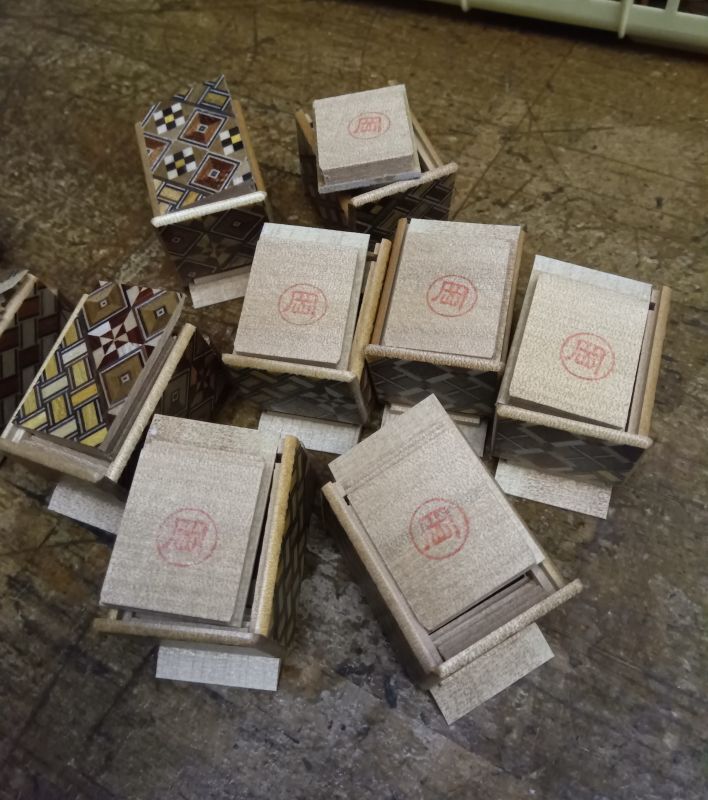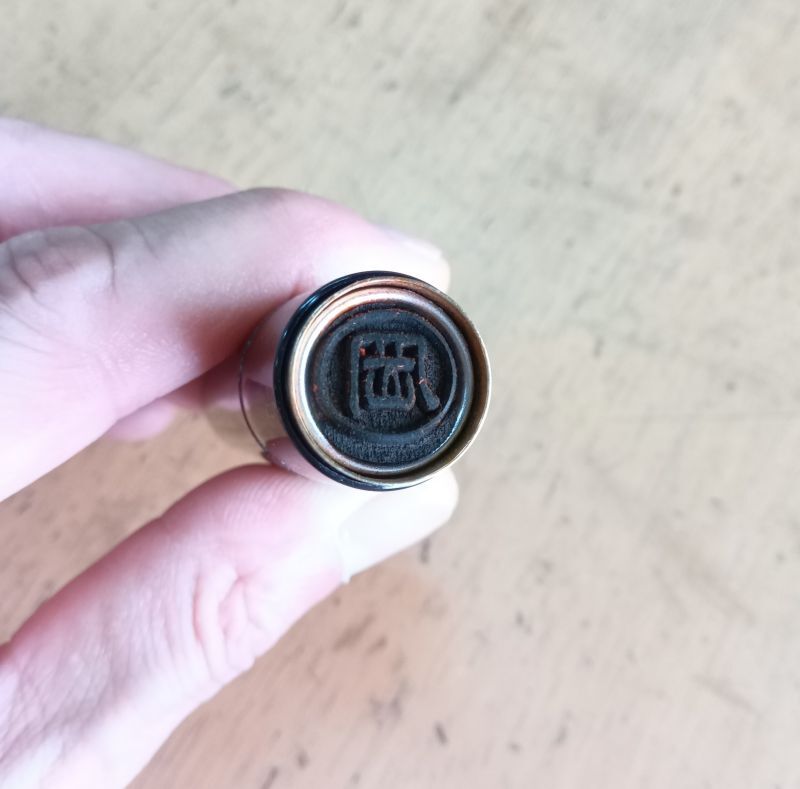Hanko
Currently, my puzzle boxes are stamped with this seal (Hanko). In the past, I used other designs, but for the past few years, I have been using this type. First, this character represents "OKA" in Japanese. In other words, it is my family name. The Japanese language has three types of characters: Hiragana, Katakana, and Kanji. When written in Kanji, "OKA" looks like this. It is a single character.
These stamps are called "hanko" or "inkan" in Japanese. They are commonly used. In various situations, such as when buying something, signing a contract, or giving approval, Japanese people often use hanko instead of a handwritten signature.
In fact, there are two types of these hanko. One type is made by carving characters into materials such as stone, plastic, or animal horn (the high-end ones!), and then stamping it after applying ink which is called "shuniku" in Japanese. The other type is made of rubber, with ink stored inside the body, allowing the ink to be replenished automatically. In Japan, the true hanko refers to the former type, while the latter rubber type is not valid for official documents. It is more like a toy stamp. By the way, the one stamped on my boxes is this rubber type (photo). It is convenient for stamping many times since it doesn't require applying ink each time.
This hanko uses water-based ink, so it sometimes bleeds into the wood grain, causing the characters to blur. To prevent this, I choose the position on the wood carefully when stamping.
The color of these hanko is most often red (specifically vermilion). This tradition comes from Chinese influence, as red has long-lasting color properties and, in ancient China, red was associated with noble meanings such as immortality.
However, this type of hanko is sold in many stores in Japan and can be purchased by anyone without any need for identification. Therefore, they are also popular as souvenirs for tourists from abroad😆
This means that it is possible to buy a hanko with someone else's name on it. Therefore, the official effectiveness of these hanko (i.e., their use on important documents) has been questioned. Traditionally, the integrity (goodwill) of Japanese people has ensured their effectiveness (i.e., not using someone else's hanko), but in recent years, with the push towards going paperless, their role is increasingly being replaced by handwritten signatures and online methods.
These stamps are called "hanko" or "inkan" in Japanese. They are commonly used. In various situations, such as when buying something, signing a contract, or giving approval, Japanese people often use hanko instead of a handwritten signature.
In fact, there are two types of these hanko. One type is made by carving characters into materials such as stone, plastic, or animal horn (the high-end ones!), and then stamping it after applying ink which is called "shuniku" in Japanese. The other type is made of rubber, with ink stored inside the body, allowing the ink to be replenished automatically. In Japan, the true hanko refers to the former type, while the latter rubber type is not valid for official documents. It is more like a toy stamp. By the way, the one stamped on my boxes is this rubber type (photo). It is convenient for stamping many times since it doesn't require applying ink each time.
This hanko uses water-based ink, so it sometimes bleeds into the wood grain, causing the characters to blur. To prevent this, I choose the position on the wood carefully when stamping.
The color of these hanko is most often red (specifically vermilion). This tradition comes from Chinese influence, as red has long-lasting color properties and, in ancient China, red was associated with noble meanings such as immortality.
However, this type of hanko is sold in many stores in Japan and can be purchased by anyone without any need for identification. Therefore, they are also popular as souvenirs for tourists from abroad😆
This means that it is possible to buy a hanko with someone else's name on it. Therefore, the official effectiveness of these hanko (i.e., their use on important documents) has been questioned. Traditionally, the integrity (goodwill) of Japanese people has ensured their effectiveness (i.e., not using someone else's hanko), but in recent years, with the push towards going paperless, their role is increasingly being replaced by handwritten signatures and online methods.

